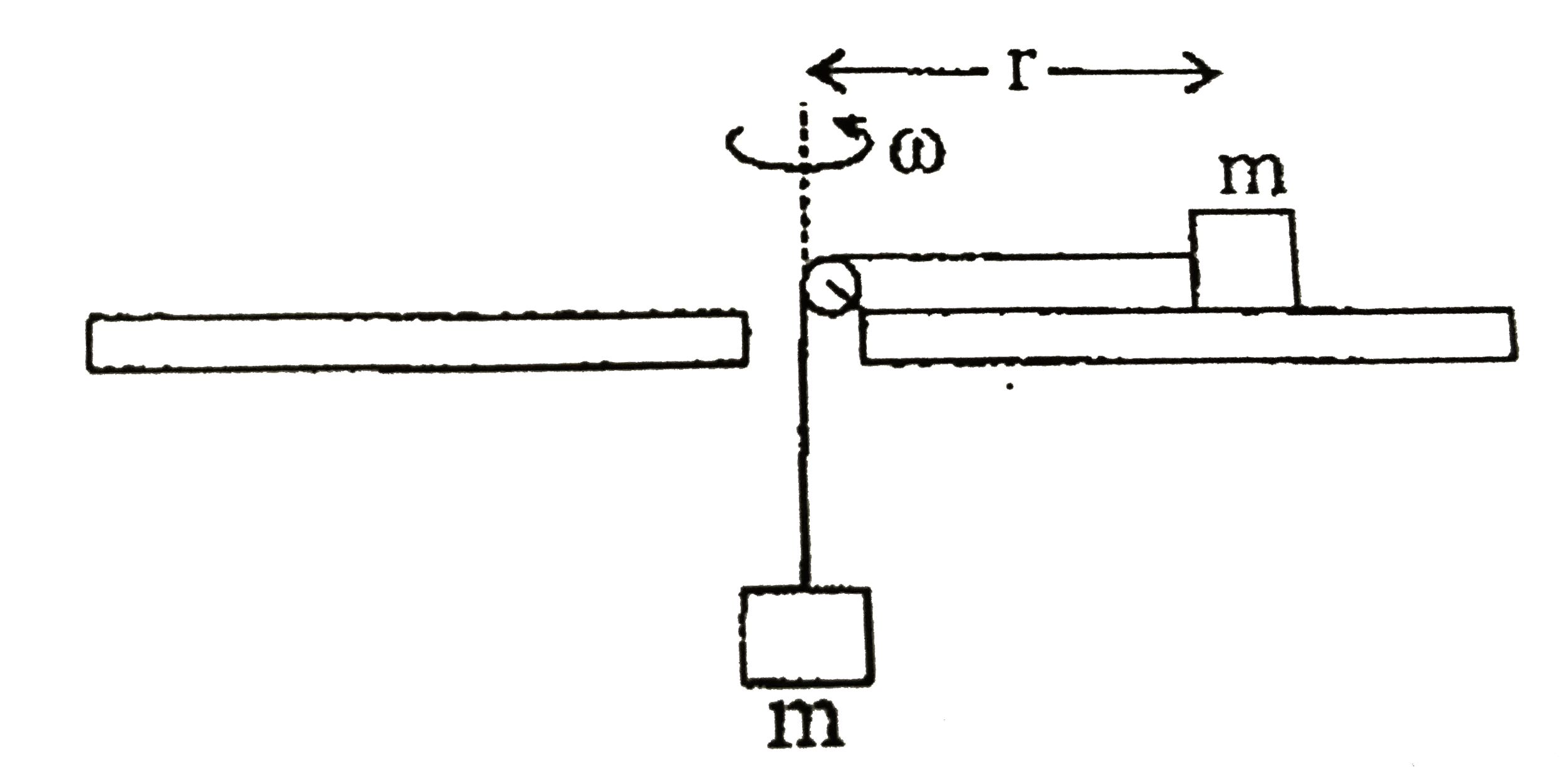Two men of equal masses stand at opposite ends of the diameter of a turntable disc of a certain mass. Moving with constant angular velocity. The two men make their way to the middle of the turntable at equal rates in doing so
kinetic energy of rotation has increased while angular momentum remains same
kinetic energy of rotation has decreased while angular momentum remains same
kinetic energy of rotation has decreased but angular momentum has increased
both, kinetic energy of rotation and angular momentum have decreased
The correct Answer is:A
I1ω1=I2ω2
Since, men move towards middle of turm table I2 decrease hence ω2 increase.
∴ΔK=I1ω21−12I2ω22
=12I1ω21[1−I2I1.ω22ω21]
{ω2ω1>1}
=12I1ω21[1−ω2ω1]<0
So kinetic energy increases.
Topper's Solved these Questions
- BOOK - RESONANCECHAPTER - DAILY PRACTICE PROBLEMEXERCISE - DPP No.629videos
DAILY PRACTICE PROBLEM
- BOOK - RESONANCECHAPTER - DAILY PRACTICE PROBLEMEXERCISE - DPP No.639videos
DAILY PRACTICE PROBLEM
- BOOK - RESONANCECHAPTER - DAILY PRACTICE PROBLEMEXERCISE - DPP No.609videos
DAILY PRACTICE PROBLEM
- BOOK - RESONANCECHAPTER - CURRENT ELECTRICITYEXERCISE - High Level Problems (HIP)21videos
CURRENT ELECTRICITY
- BOOK - RESONANCECHAPTER - ELECTRO MAGNETIC WAVESEXERCISE - Exercise 327videos
ELECTRO MAGNETIC WAVES
Similar Questions
Two equal masses m are attached by a string. One mass lies at radial distance r from the centre of a horizontal turntable which rotates with constant angular velocity ω=2 rad s(1), while the second hangs from the string inside the tumtable's hollow spindle (see fig.) The coefficient of static friction between the turntable and the mass lying on it is μs=0.5. The maximum and minimum values of radius such that the mass lying on the turntable does not slide are rmax+rmin in meter is
 View Solution
View SolutionA man of mass 100kg stands at the rim of a turtable of radius 2m and moment of inertia 4000kgm2 mounted on a vertical frictionless shaft at its centre. The whole system is initially at rest. The man now walks along the outer edge of the turntable with a velocity of 1m/s relative to the earth
a. With what angular velocity and in what direction does the turntable rotate?
b. Through what angle will it have rotated when the man reaches his initial position on the turntable?
c. Through what angle will it have rotated when the man reaches his initial position relative to the earth?View Solution
Knowledge Check
- Question 1 - Select One
The two ends of a train, moving with a constant acceleration, pass a certain point with velocities u and y. Then the velocity with which the middle point of the train passes the same point is
A2uvu+vBu+v2C√uvD√u2+v22 - Question 2 - Select One
The two ends of a train moving with constant acceleration pass a certain point with velocities u and 3u. The velocity with which the middle point of the train passes the same point is
A2uB32uC√5uD√10u - Question 3 - Select One
A thin circular ring of mass M and radius R is rotating in a horizontal plane about an axis vertical to its plane with a constant angular velocity ω. If two objects each of mass m be attached gently to the opposite ends of a diameter of the ring, the ring will then rotate with an angular velocity
Aω(M−2m)M+2mBωMM+2mCω(M+2m)MDωMM+m
A thin circular ring of mass M and radius r is rotating about its axis with a constant angular velocity ω. Two objects each of mass m are attached gently to the opposite ends of a diameter of the ring. The ring will now rotate with an angular velocity
View SolutionA thin circular ring of mass M and radius r is rotating about its axis with a constant angular velocity ω, Two objects, each of mass m, are attached gently to the opposite ends of a diameter of the ring. The wheel now rotates with an angular velocity.
View SolutionA thin circular ring of mass M and radius r is rotating about its axis with a constant angular velocity ω, Two objects, each of mass m, are attached gently to the opposite ends of a diameter of the ring. The wheel now rotates with an angular velocity ω=
View SolutionA thin circular ring of mass m and radius R is rotating about its axis with a constant angular velocity ω. Two objects each of mass M are attached gently to the opposite ends of a diameter of the ring. The ring now rotates with an angular velocity ω'=
View SolutionA thin circular ring of mass M and radius r is rotating about its axis with constant angular velocity ω . Two objects each of mass m are attached gently to the opposite ends of a diameter of the ring . The ring now rotates with angular velocity given by
View Solution

